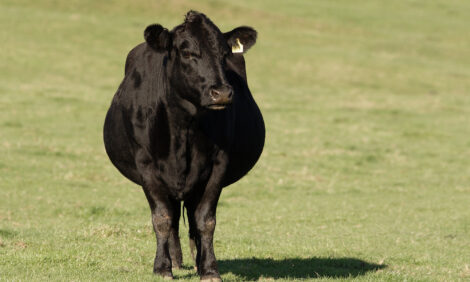



Managing Grazing Systems
Jefferson McCutcheon, Assistant Professor at the University of Ohio looks at managing grazing systems through rest periods, grazing periods, stocking density, weather patterns and water access.
With proper management pastures can be used to reduce feed costs, improve animal performance and boost farm income.
Managing grazing can have a greater effect on the pasture than any other part of pasture management. While working with beginning graziers I often find myself suggesting that they consider having more, smaller paddocks. This is based on three grazing management principles: allow the plants rest, keep grazing times short and use a high enough stocking density to harvest the forage.
Adequate rest periods
Grazing or removing leaves from forage plants is stressful. It eliminates photosynthesis, stops nutrient uptake from soil and in legumes it stops nitrogen fixation. Plants need rest to recover from this stress and to re-grow. We give the plants rest by removing the animals. By providing a rest period we allow the forages to recover and re-grow.
Overgrazing is a term used to describe inadequate rest periods, but many times it is misunderstood. Most think that having too many animals in a pasture causes overgrazing. Overgrazing is not having too many animals in a pasture; it is having animals in the pasture for too long.
What causes overgrazing? Allowing animals to re-graze plants before they are able to replace root reserves used for re-growth. When animals are turned into a new pasture they will select the plants they prefer. If kept in the same field long enough the plants grazed first will re-grow. For some reason new growth always seems to be preferred to old growth. These recovering plants with new growth must be protected. Overgrazing keeps these plants stressed. In the short term it can slow plant recovery. Long term it can lead to the loss of some plant species in the pasture and the loss of forage yield.
Rest periods will differ during the season. In spring the rest period needed may be less than half of the rest period needed for summer.
Short grazing periods
Along with rest periods, keeping the time animals are grazing a particular field short is important. The grazed plants will re-grow. Remove the animals before that happens. Growth rates change during the year, so the length of time before plants re-grow also changes. When plants are growing rapidly, it may be two days. During periods of slow growth it can be seven days.
Besides, the longer animals stay in a paddock the poorer the quality of forage. As forage quality goes down animal intake declines. If intake goes down, performance drops. Short grazing periods increase the quality and quantity of grazed forages and improve animal performance.
Stocking Density
If we keep the grazing times short then we need enough animals to harvest all the forage we want in a paddock. Stocking density is the number of animals in an area at a particular moment. High stocking density increases the uniformity of gazing. Animals selectively graze. They eat the best plants first. They also ruin part of the pasture with manure, urine and trampling forage.
Grazing management typically increases stocking density. Livestock are no longer spread over one large pasture but consolidated, for a point in time, into a smaller paddock. Increasing stocking density frequently improves grazing distribution and harvest efficiency. There is greater competition for the available forage. With heavy grazing pressure more forage is consumed by livestock and less is lost to such things as trampling, spoilage by animal wastes, and plant maturation and leaf death.
The real trick is harvesting high quality forage, is by keeping the grazing periods short while maintaining adequate rests. Usually that means decreasing the size of paddock and increasing the number of paddocks.


